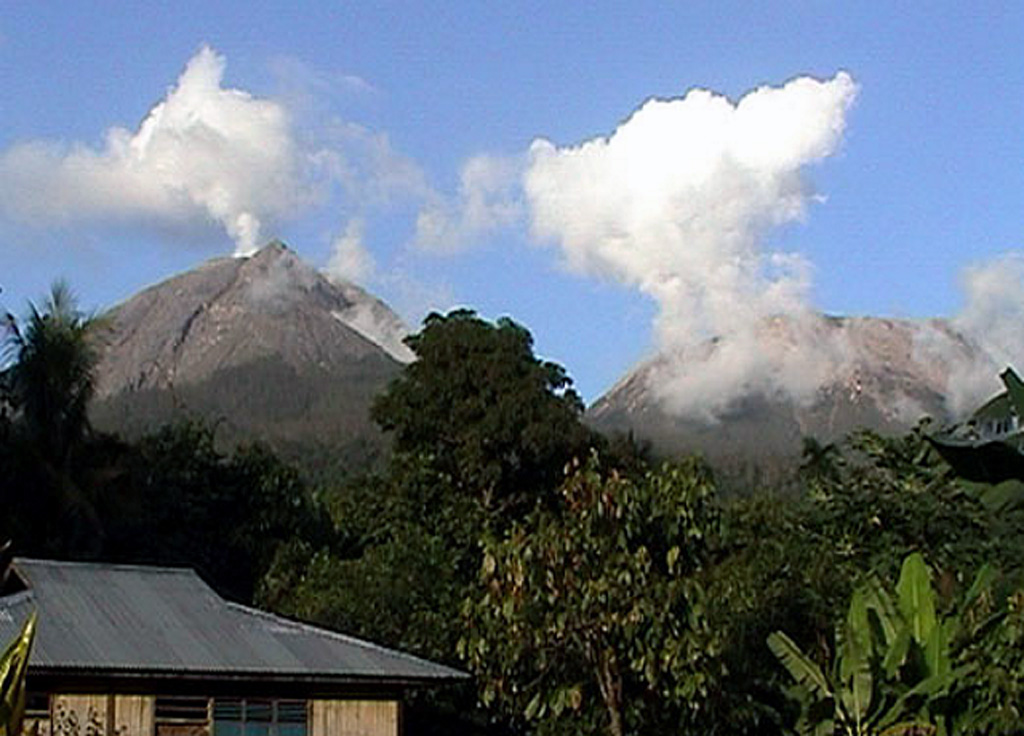 Lewotobi Lewotobi
Sunda Volcanic Arc
|
The Pusat Vulkanologi dan Mitigasi Bencana Geologi (PVMBG) reported that eruptive activity at Lewotobi Laki-laki remained at a high-level during 5-12 November, producing tall ash plumes, explosions, pyroclastic flows, and a lava flow, which all significantly affected residents, infrastructure, and transportation. The Badan Nasional Penanggulangan Bencana (BNPB) reported that as of 5 November there were 2,472 people spread across three evacuation shelters. A total of nine people had died (six from one family according to a news article) from the eruptive events that occurred during 3-4 November, 63 were injured, and five people remained in the hospital, one was critically injured. Information about damage to homes and infrastructure was incomplete because the exclusion zone and ongoing eruption prevented evaluations.
During 5-6 November dense gray ash plumes rose as high as 1 km above the summit and drifted SW, W, and NW. A webcam image from 1858 on 6 November showed incandescent material descending one of the flanks.
Another webcam image from 0244 on 7 November showed incandescent material being ejected above the summit and descending the flanks. Dense gray ash plumes during the early morning hours of the 7th rose as high as 2.5 km above the summit and drifted SW and W. At 0853 a dense gray ash plume rose 2.5 km above the summit and drifted SW. According to a news report the event was accompanied by a banging noise and pyroclastic flows that descended the NW flank about 1 km. PVMBG noted that during 1010-1200 dense ash plumes that were gray or gray and brown in color rose as high as 8 km above the summit and drifted SW. A news source reported that pyroclastic flows descended the NNE flank 3-4 km, and abundant amounts of ash fell from the plume onto the flanks and in areas downwind. Activities were prohibited within a radius of 7 km from the center of Laki-laki with restrictions expanding to 8 km on the SW and NW flanks later that afternoon. During 7-8 November the Darwin VAAC reported that some of the ash plumes rose as high as 16.8 km (55,000 ft) a.s.l. based on satellite data.
PVMBG and BNPB reported that several large explosive eruptions were recorded during 8-9 November, and BNPB noted that about 1,049 additional people evacuated from seven villages. At 0125 on 8 November an ash cloud rose 5 km above the summit and pyroclastic flows traveled as far as 3 km down the NE flank. Eruptive events at 0748, 1023, 1044, and 1314 generated ash plumes that rose 1-2.5 km above the summit. An explosive eruption at 1355 generated a dense ash plume that rose as high as 10 km and drifted SW, W, and NW. Pyroclastic flows descended the flanks in all directions and ash fell in areas downwind. According to a news report several “bangs” were heard by residents in Pululera Village (8 km NW), Wulanggitang. They observed dark black clouds accompanied by thunderstorms and occasional lightning; ash fell in the village 15-20 minutes after hearing the bangs. The hazard exclusion zone was expanded to an 8-km radius around both the Laki-laki and Perempuan craters and access to roads connecting East Flores and Sikka Regency was restricted. Authorities urged residents to go to centralized evacuation points in Wulanggitang and Larantuka Districts in the East Flores Regency, and in Maumere City (63 km WSW) in the Sikka Regency.
At 0447 on 9 November a dense, gray-brown ash plume rose 9 km above the summit and drifted SW, W, and NW. Rumbling sounds were reported. According to the Darwin VAAC the ash plumes rose as high as 15.2 km (50,000 ft) a.s.l. based on satellite data. Pyroclastic flows descended the NW flanks as far as 2 km. Intense incandescence emanating above the summit and avalanches of incandescent lava descended multiple flanks. Eruptive events at 0716, 0850, 1123, 1233, 1253, 1508, 1640, 1815, and 1942 on 9 November generated ash plumes that rose as high as 6 km above the summit. The VAAC reported that at 0850 and 0920 ash plumes rose as high as 15.8 km (52,000 ft) a.s.l. and drifted W.
During 0600-1200 on 9 November the hazard exclusion zone was expanded to 9 km on the SW, W, and NW flanks of Laki-laki. Additional evacuation centers opened in SDK Eputobi (16 km NNE) in the Titehena District. Community members were assisting in food preparation, health workers offered care and psychological support to families, teachers were providing lessons to students, and surrounding communities helped with sanitation needs. By 2000 on 9 November a total of 11,445 residents had evacuated. The Komodo Labuan Bajo Airport (317 km W) was closed during 9-10 November and at least 30 flights were cancelled. Ships were sent to transport people to areas with open airports.
According to a news report an eruption occurred early in the morning on 10 November; a photo showed streams on incandescent material covering the upper flanks. A webcam image captured at 1814 showed a possible lava flow on the upper W or NW flank. BNPB reported that on 10 November two evacuation posts, in Hikong and Kringa (12-15 km from the summit), that were being affected by ashfall were moved to East Flores. Ash plumes rose 1-6 km above the summit and drifted SW, W, NW, and N.
On 11 November airports that remained closed because of ashfall included the Komodo International Airport, the Francis Airport Xaverius Seda (60 km W), the H. Hasan Aroeboesman Airport (126 km WSW), the Soa Airport (190 km W), and Frans Xavier Seda Airport (252 km W). Ash plumes continued to be produced, rising 0.5-2.5 km above the summit and drifting SW, W, and NW. A webcam image at 2006 showed incandescent material being ejected above the summit, and advancement of the lava flow on the NW flank.
Ash plumes on 12 November rose as high as 9 km above the summit and drifted SW, W, and NW. Webcam images from 0406 and 0527 showed the advancing lava flow and a dark plume rising from possibly the end of the flow. A news report noted on 12 November that preliminary estimates suggested that around 2,700 housing units needed to be built for evacuees to be relocated. The H. Hasan Aroeboesman Airport, Gewayantana Airport (38 km NE), Frans Xavier Seda Airport, and Soa Airport in Bajawa among others remained closed. According to a news report about 84 flights in and out of Bali’s Gusti Ngurah Rai international airport (835 km W) were affected during the previous few days and on 13 November 90 international and domestic flights were cancelled. BNPB reported that by 13 November a total of 13,116 people were in evacuation shelters across eight locations.
Sources: Pusat Vulkanologi dan Mitigasi Bencana Geologi (PVMBG, also known as CVGHM), Badan Nacional Penanggulangan Bencana (BNPB), Badan Nacional Penanggulangan Bencana (BNPB), Badan Nacional Penanggulangan Bencana (BNPB), Badan Nacional Penanggulangan Bencana (BNPB), Badan Nacional Penanggulangan Bencana (BNPB), Badan Nacional Penanggulangan Bencana (BNPB), Associated Press, Antara News, Antara News, Antara News, Antara News, Antara News, Antara News, Antara News, Antara News, Antara News, Antara News, Antara News, Antara News, Antara News, Antara News, Antara News, Antara News, Darwin Volcanic Ash Advisory Centre (VAAC)
|
 Sheveluch Sheveluch
Eastern Kamchatka Volcanic Arc
|
The Kamchatkan Volcanic Eruption Response Team (KVERT) reported that during 24 October-6 November lava extrusion continued at Sheveluch’s “300 years of RAS” (Karan) dome on the SW flank of Old Sheveluch and at the dome at Young Sheveluch; activity escalated into an intense eruptive phase on 7 November. Thermal anomalies over both domes were identified in satellite images on 25, 27-28, and 31 October and 1-3 November, and over the “300 years of RAS” dome during 3-6 November. Weather conditions sometimes prevented views of the volcano.
According to the Institute of Volcanology and Seismology (IVS) of the Far Eastern Branch of the Russian Academy of Sciences (FEB RAS) incandescence on the W side of the “300 years of RAS” dome was visible during 0800-0909 on 7 November. A strong explosive eruption began at 1919 and the entire volcanic complex was incandescent; pyroclastic material was likely ejected from both domes covered the dome complex. At 0920 incandescent pyroclastic flows descended the W flank of “300 years of RAS” dome. At 0927 lightning flashes at 8 km (26,200 ft) a.s.l. illuminated an ash plume that was rising and drifting E. Residents in Klyuchi observed lightning in the plume and heard explosions, and according to a news article felt a shock wave. KVERT raised the Aviation Color Code to Red (the highest level on a four-color scale) at 1027, noting that a large ash cloud was visible in satellite images rising 10-11 km (32,800-36,100 ft) a.s.l. and drifting ENE. IVS FEB RAS reported that by 1030 the ash cloud had expanded to 40 x 60 km and drifted 5 km NE. Reports included strong incandescence at the domes, explosions, pyroclastic flow deposits on the W flank, and pyroclastic flows descending the S flank during 1136-1140. According to a news report pyroclastic flow deposits extended more than 10 km W. Intense incandescence was periodically observed during the dark hours (1200-1900). Ash plumes rose 7-12 km (23,000-39,400 ft) a.s.l. and drifted as far as 300 km E and NE, causing ashfall in Ust-Kamchatsk and Cape Africa during 1940-2300. KVERT lowered the Aviation Color Code to Orange noting that although lava extrusion continued, the very intense explosions were no longer being recorded.
Volcano Observatory Notices for Aviation (VONA) issued by KVERT at 2250 on 7 November and at 0028 on 8 November noted that continuing explosions were producing ash plumes rising as high as 8.5 km (27,900 ft) a.s.l. and drifting 120 km E. KVERT raised the Aviation Color Code to Red at 0043 on 8 November based on satellite data from 0010 indicating ash plumes as high as 11 km (36,100 ft) a.s.l.. According to IVS FEB RAS an ash plume was visible in satellite images drifting 290 km E at an altitude of 6 km (19,700 ft) a.s.l. Another ash cloud that was 200 x 50 km in extent was about 190 km from the volcano drifting NE at 6 km a.s.l. During 2120-2200 ash plumes rose to 4.2 km (13,800 ft) a.s.l. and drifted E. Ash at 6 km a.s.l. continued to drifted E. A 6-km-altitude ash cloud 55 x 25 km was 450 km SE of the summit and another cloud, at the same altitude and 325 x 330 km in size, was 460 km NE of the summit. KVERT lowered the Aviation Color Code to Orange at 2149 on 8 November. Ash plumes rose 3.5-4 km (11,500-13,100 ft) a.s.l. and drifted E; ash plumes from earlier eruptive events extended as far as 550 km E.
KVERT issued VONAs for ash emissions on 9 November. Ash plumes rose as high as 5 km (16,400 ft) a.s.l. and drifted E at 0430 and rose as high as 4 km a.s.l. and drifted E at 2120. According to IVS FEB RAS weather clouds often prevented views throughout the day and incandescence from the complex was periodically visible through the night. Satellite images showed ash clouds at far distances from the volcano in multiple directions, for example: 0920 one plume was at 10 km a.s.l., 170 x 300 km, about 1,000 km NNE of the summit, and a second plume was at 8-10 km a.s.l. located 790 km NNW; at 2100 an ash cloud at 10 km a.s.l, 110 x 30 km, about 1,030 km NE.
Ash plumes continued to be produced on 10 November. KVERT reported that at 0440 an ash plume rose as high as 4 km a.s.l. and drifted 430 km ESE. IVS FEB RAS noted that ash emissions rose 4-8 km a.s.l. and drifted NE based on video and satellite data, and notices from the Tokyo VAAC. Dates are based on UTC times; specific events are in local time where noted.
Sources: Kamchatkan Volcanic Eruption Response Team (KVERT), Institute of Volcanology and Seismology (IVS) of the Far Eastern Branch of the Russian Academy of Sciences (FEB RAS), Interfax News
|
![]() Download Smithsonian / USGS Weekly Volcanic Activity Report Network Link
Download Smithsonian / USGS Weekly Volcanic Activity Report Network Link

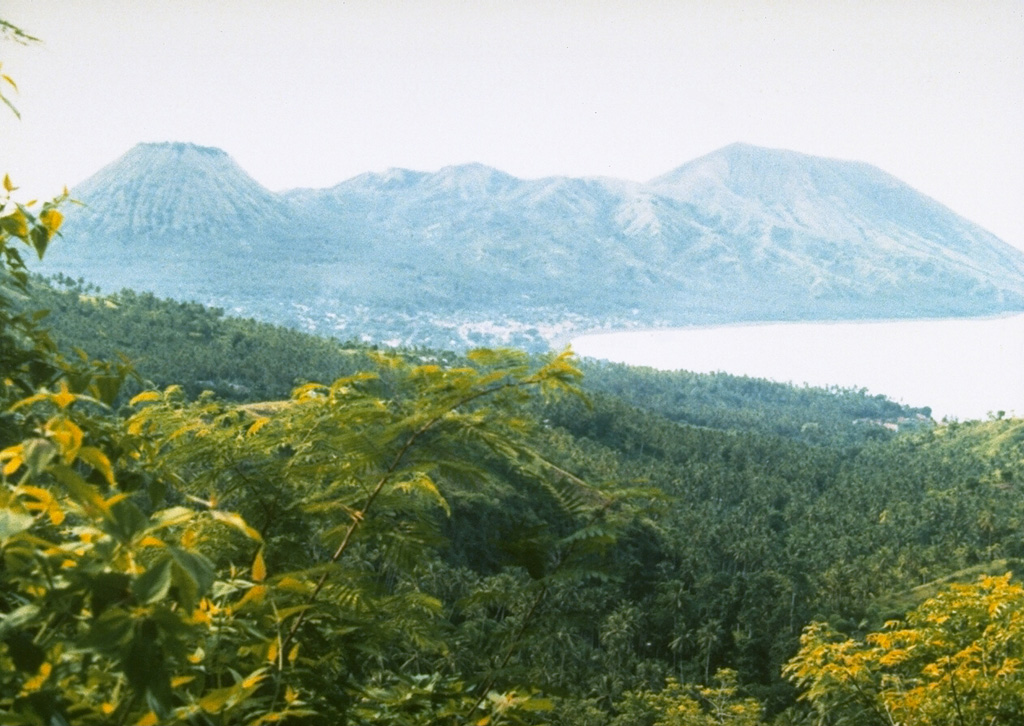 Iya
Iya Kanlaon
Kanlaon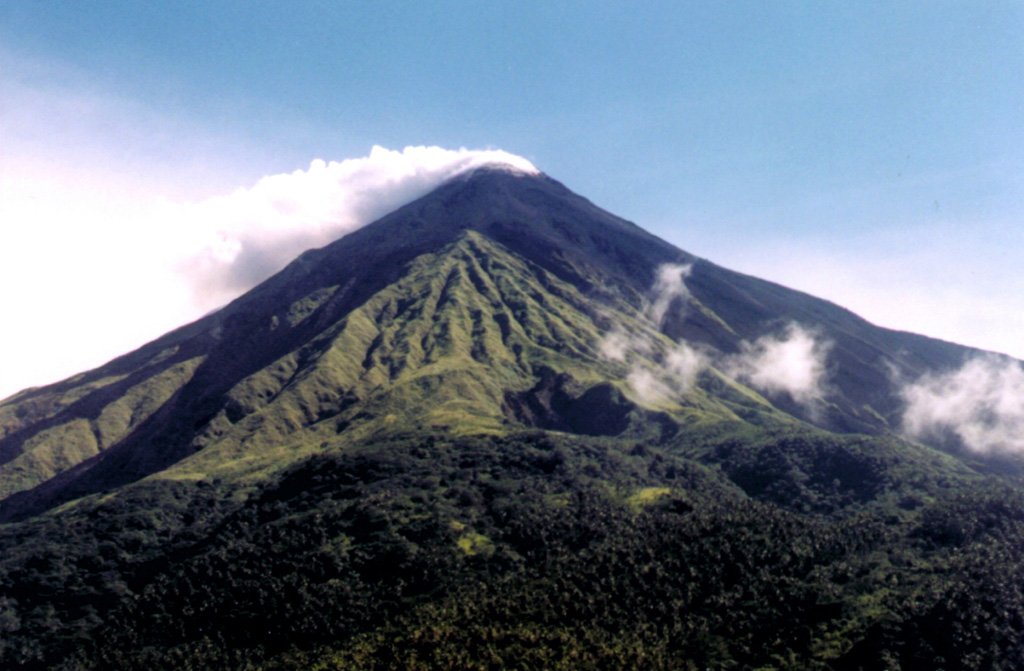 Karangetang
Karangetang Lewotobi
Lewotobi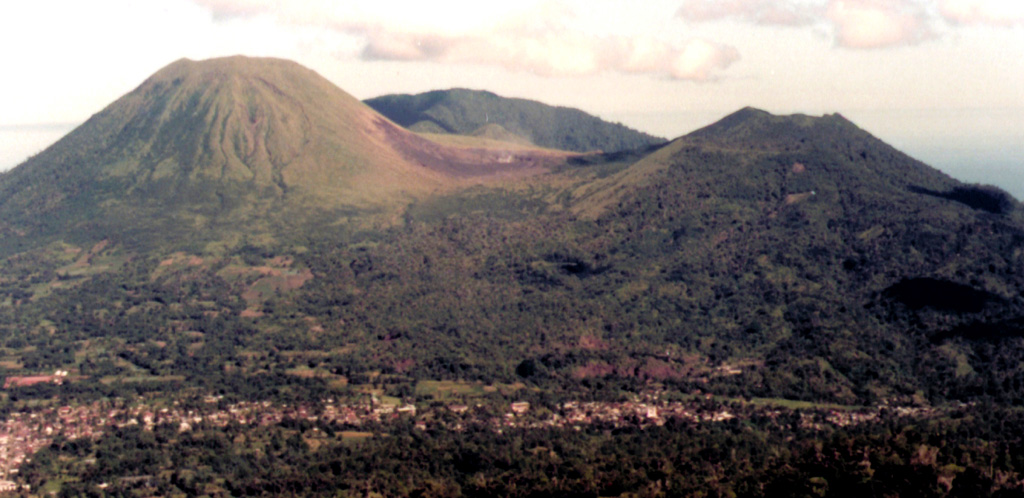 Lokon-Empung
Lokon-Empung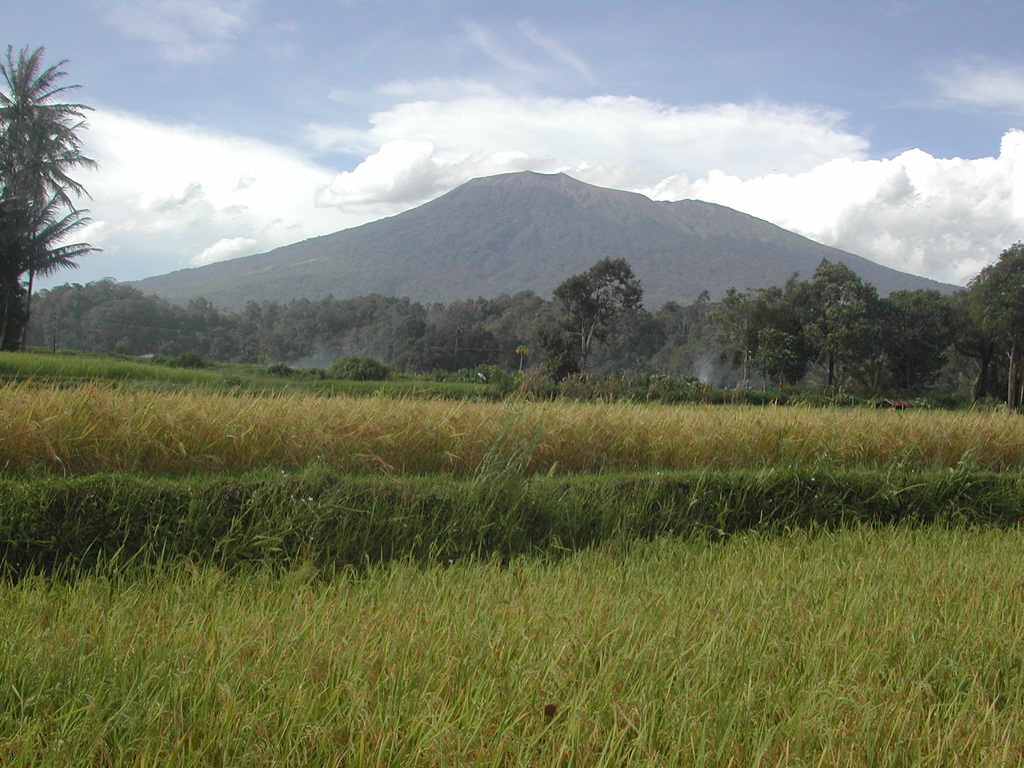 Marapi
Marapi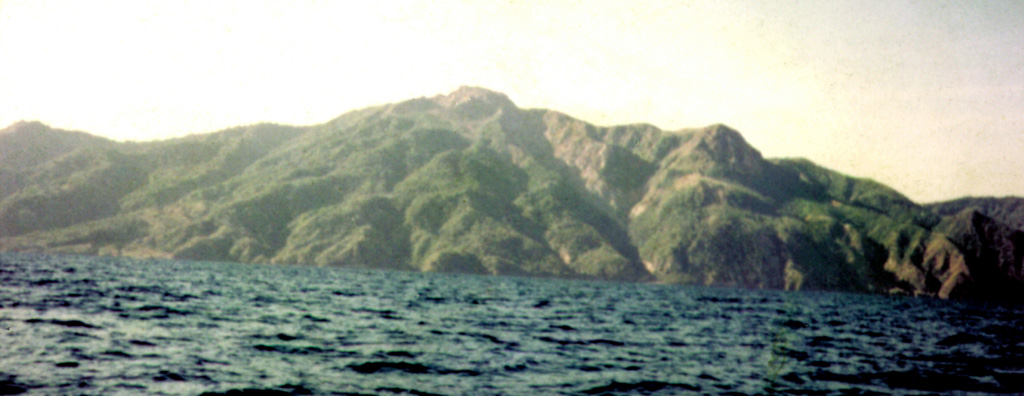 Paluweh
Paluweh Sheveluch
Sheveluch Taal
Taal Aira
Aira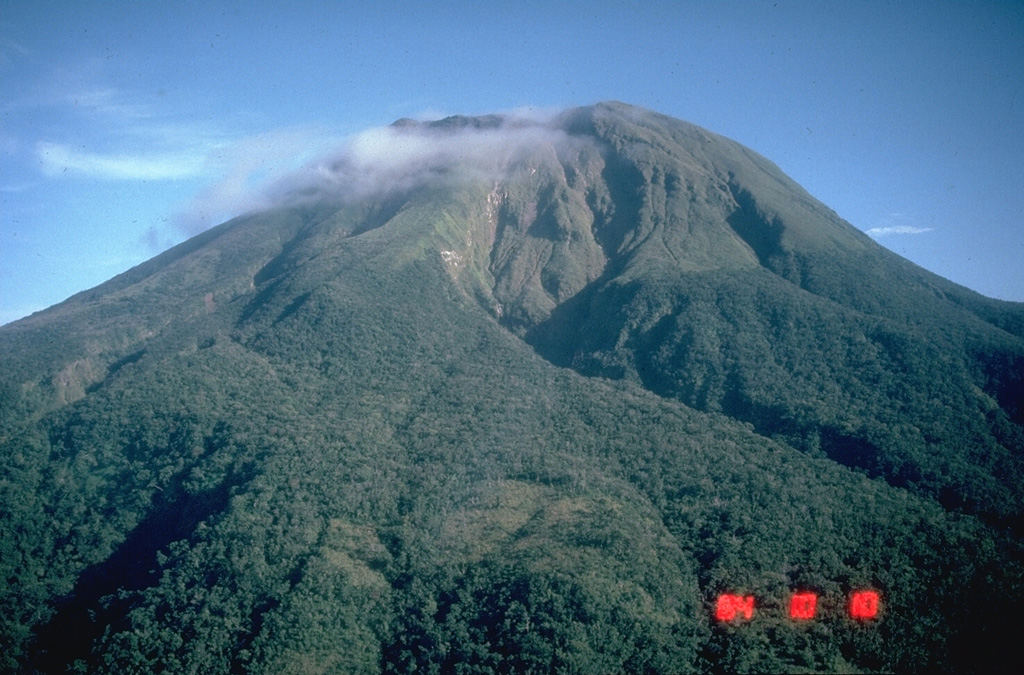 Bulusan
Bulusan Ebeko
Ebeko Etna
Etna Fuego
Fuego Great Sitkin
Great Sitkin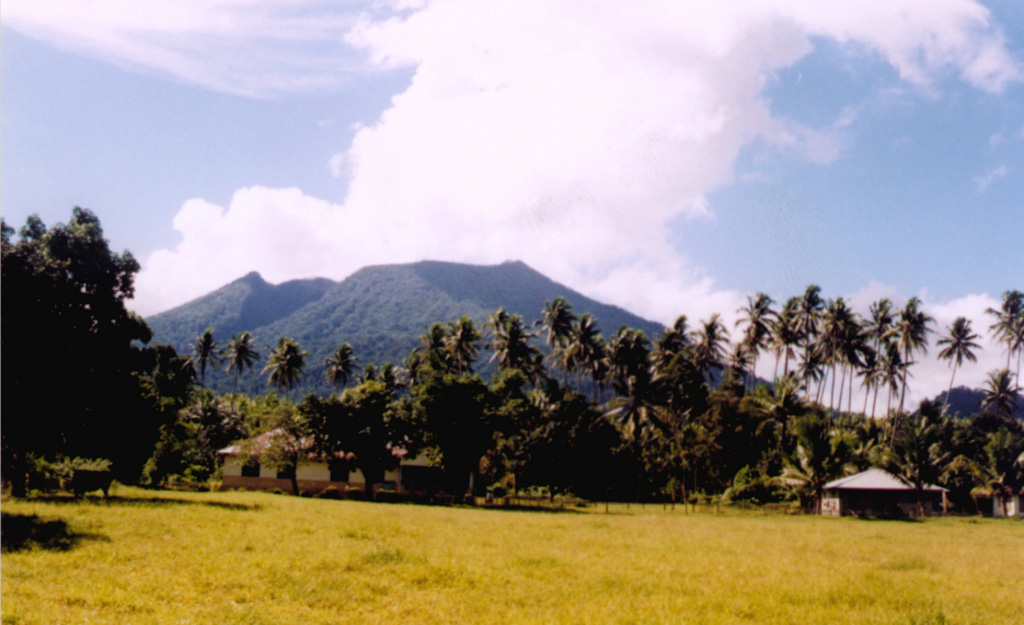 Ibu
Ibu Karymsky
Karymsky Merapi
Merapi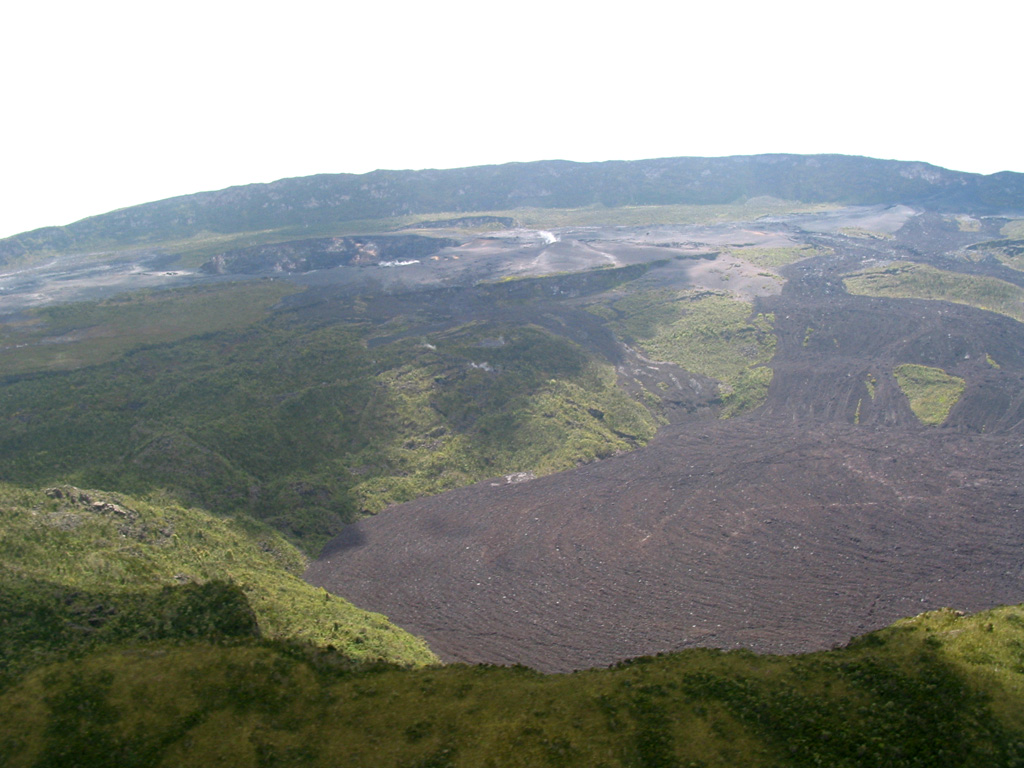 Nyamulagira
Nyamulagira Sabancaya
Sabancaya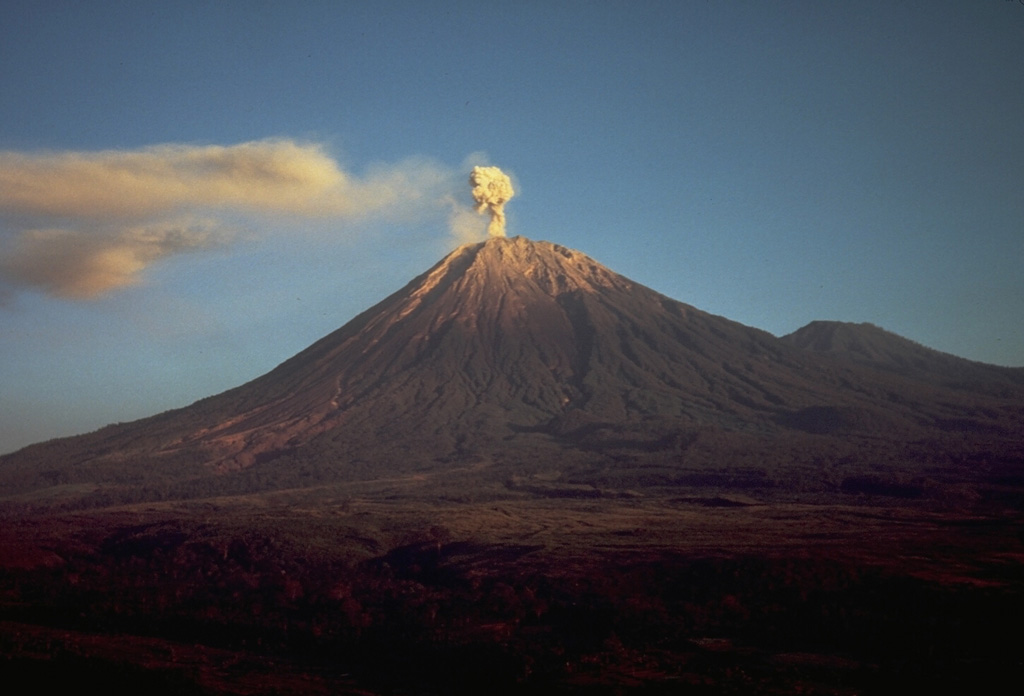 Semeru
Semeru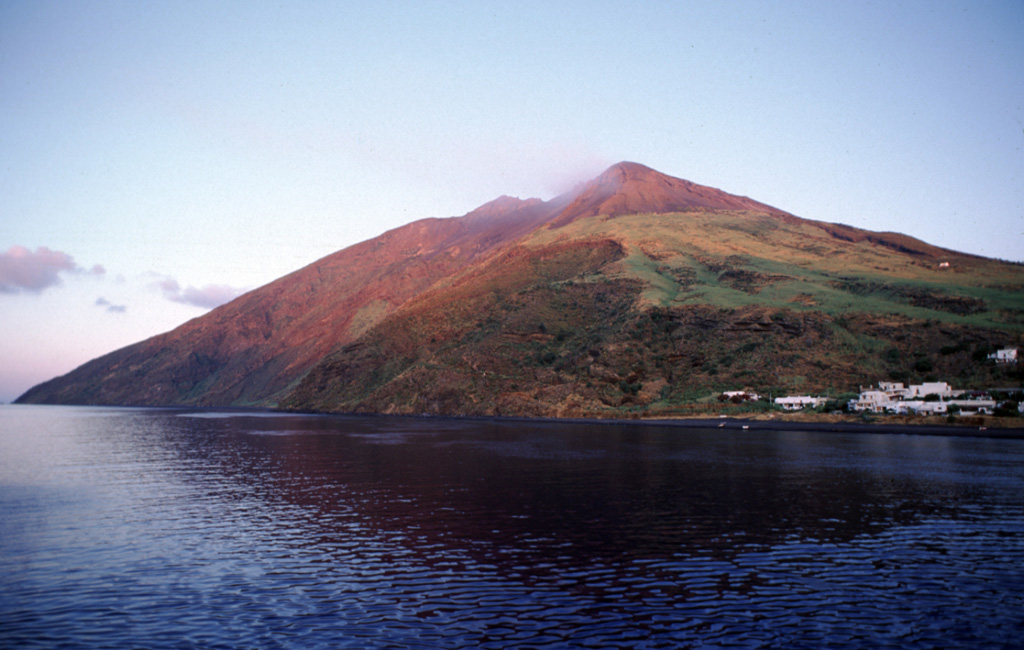 Stromboli
Stromboli Suwanosejima
Suwanosejima